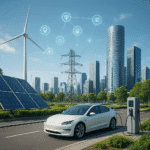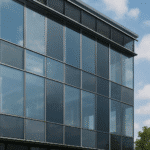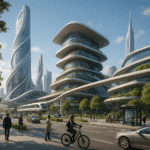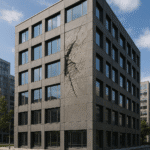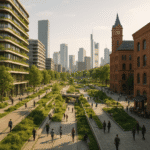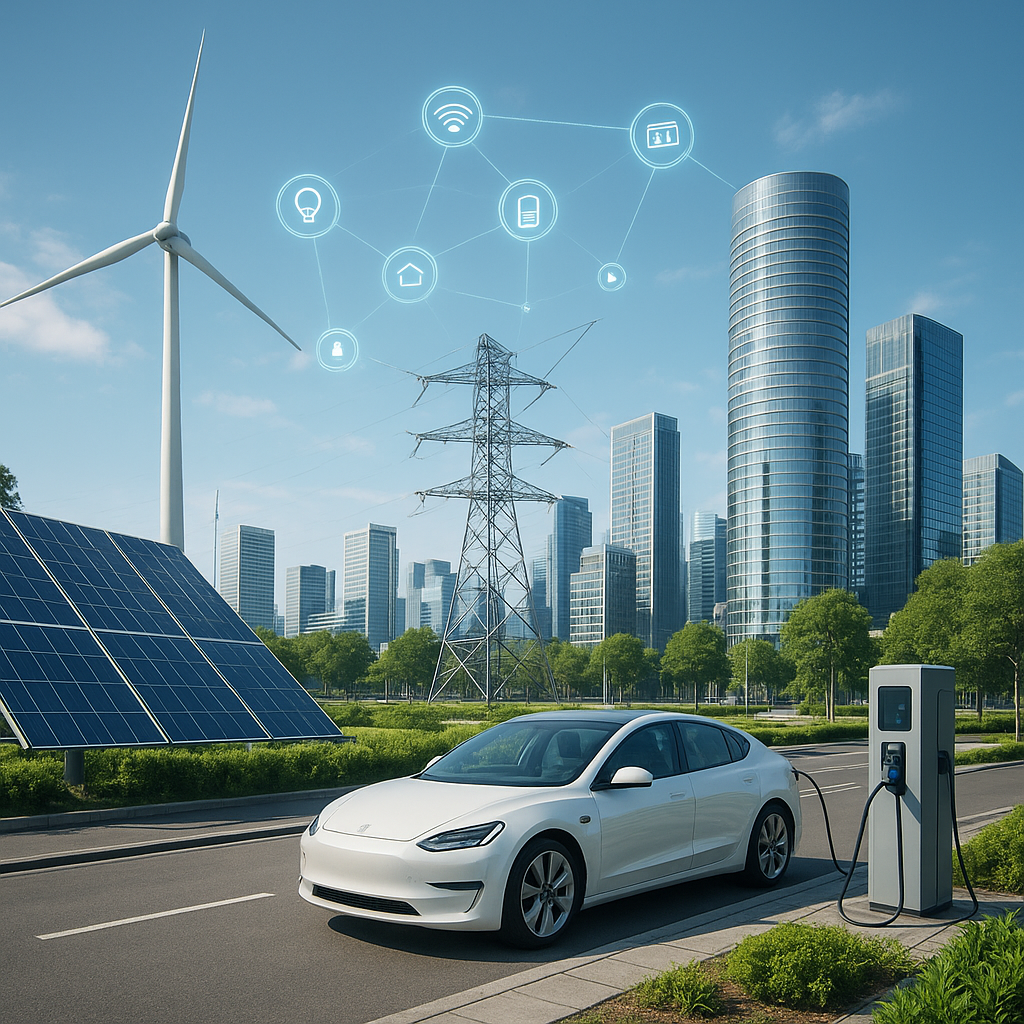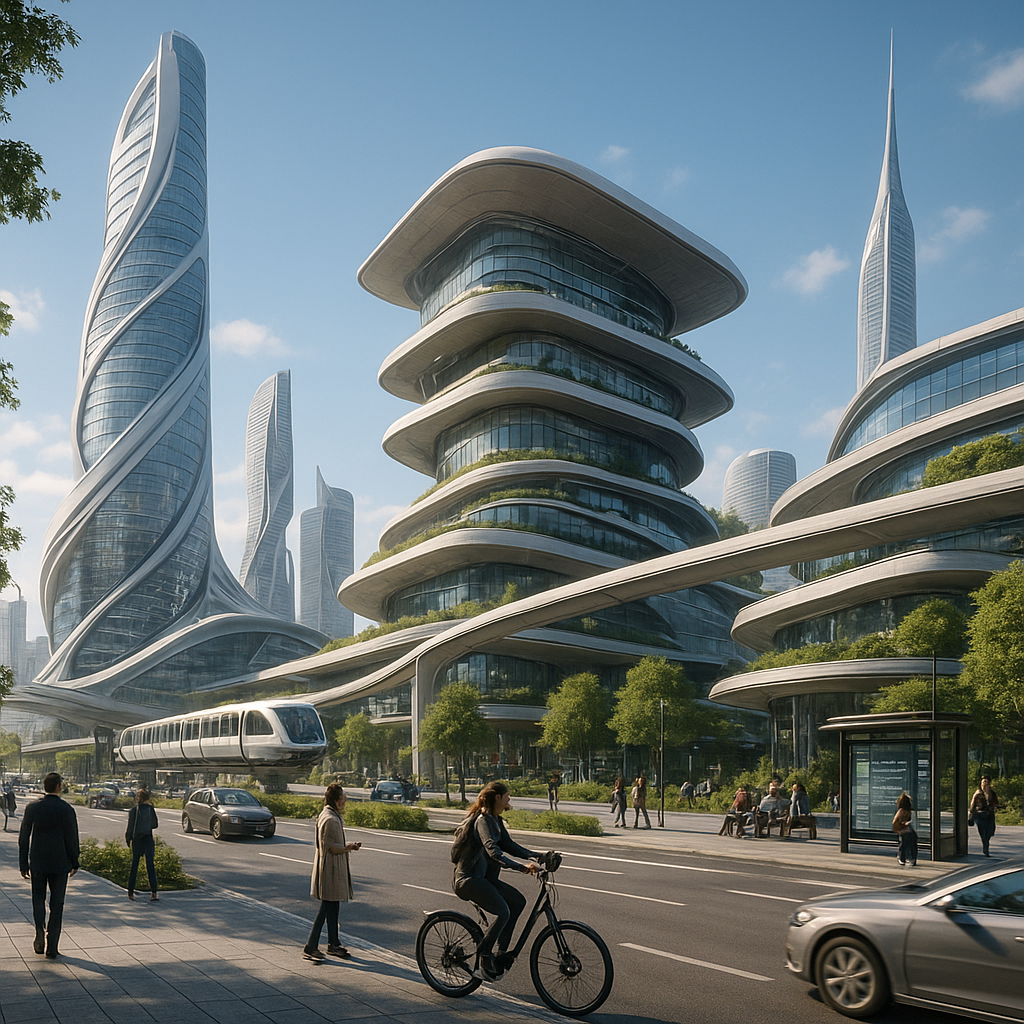Futuristic architecture has long captured the imagination of designers, architects, and the public alike, offering a glimpse into what our built environment might look like in the years to come. From the sleek, aerodynamic forms of concept art to the tangible blueprints that guide construction, the evolution of futuristic design is a testament to human creativity and technological advancement. This article delves into the journey of futuristic architecture, exploring its origins, current trends, and the potential future it holds.
The Origins of Futuristic Architecture
The roots of futuristic architecture can be traced back to the early 20th century, a period marked by rapid technological advancements and a burgeoning interest in the possibilities of the future. Visionary architects like Antonio Sant’Elia and the Futurist movement in Italy were among the first to articulate a vision of cities dominated by dynamic forms and mechanized structures. Their work, though largely conceptual, laid the groundwork for future generations of architects who would continue to push the boundaries of design.
During the mid-20th century, the Space Age further fueled the imagination of architects and designers. The fascination with space exploration and the potential for human life beyond Earth inspired a wave of architectural designs characterized by bold, sweeping curves and innovative materials. Structures like Eero Saarinen’s TWA Flight Center and the Space Needle in Seattle became iconic representations of this era, embodying the optimism and forward-thinking spirit of the time.
Current Trends in Futuristic Design
Today, futuristic architecture is more than just a stylistic choice; it is a response to the pressing challenges of our time. As urban populations continue to grow and environmental concerns become increasingly urgent, architects are tasked with creating buildings that are not only visually striking but also sustainable and efficient.
One of the most significant trends in contemporary futuristic design is the integration of smart technology. Buildings are now being equipped with advanced systems that allow for greater energy efficiency, improved security, and enhanced comfort for occupants. From smart lighting and climate control to automated maintenance systems, these technologies are transforming the way we interact with our built environment.
Another key trend is the use of innovative materials and construction techniques. Architects are experimenting with materials like carbon fiber, 3D-printed components, and self-healing concrete to create structures that are both lightweight and durable. These advancements not only allow for more daring and unconventional designs but also contribute to the sustainability of the built environment by reducing waste and energy consumption.
The Future of Futuristic Architecture
As we look to the future, the possibilities for futuristic architecture are virtually limitless. With the continued advancement of technology and a growing emphasis on sustainability, architects are poised to create buildings that are not only aesthetically pleasing but also environmentally responsible and adaptable to the changing needs of society.
One area of exploration is the concept of modular and adaptable architecture. As cities become more densely populated, the ability to quickly and efficiently reconfigure spaces will be crucial. Modular designs allow for flexibility in use and can be easily expanded or contracted to meet the demands of a growing population.
Additionally, the rise of virtual and augmented reality technologies is opening up new avenues for architectural design and visualization. These tools enable architects to create immersive experiences that allow clients and stakeholders to explore and interact with a building before it is constructed, leading to more informed decision-making and a greater alignment of vision and reality.
In conclusion, the evolution of futuristic architecture is a dynamic and ongoing process, driven by the interplay of creativity, technology, and societal needs. As we continue to push the boundaries of what is possible, the buildings of the future will not only inspire awe but also serve as a testament to our ability to innovate and adapt in the face of an ever-changing world.
